At a time when publication design industry was dominated by men, Cipe Pineles had come onto the scene and given her influence as the first female art director of Conde Nast publications like Vogue, Seventeen, Vanity Fair and Glamour to name a few. She is also credited as the first art director to integrate the world of fine arts and mass market publications. Pineles’ 60+ year career as a designer and teacher has been celebrated and revisited throughout recent history of design and fashion.
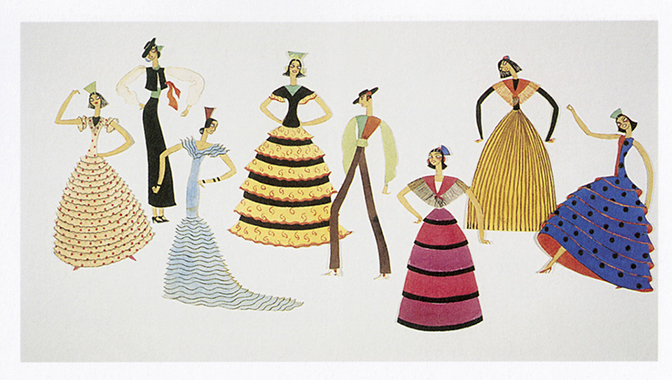
Cipe Pineles was born in Vienna, Austria in 1908 as the fourth of five children. She had spent much of her childhood in Poland with her middle class Jewish family. As her father was often sick, the family was forced to move around Poland to seek treatment and ultimately immigrated to the U.S. during World War I. Pineles had come to the U.S. with her mother and remained in Brooklyn, New York and eager to attend school. In High school, Pineles was a social butterfly and was well liked by people she met. This was also the time when she had learned art and first developed bigger ambitions. At the time, most women would be off getting married after school but she was determined to work and make something of herself, choosing to attend college and find an occupation. Pineles attended Pratt Institute in 1926 to pursue a career as an artist and designer.
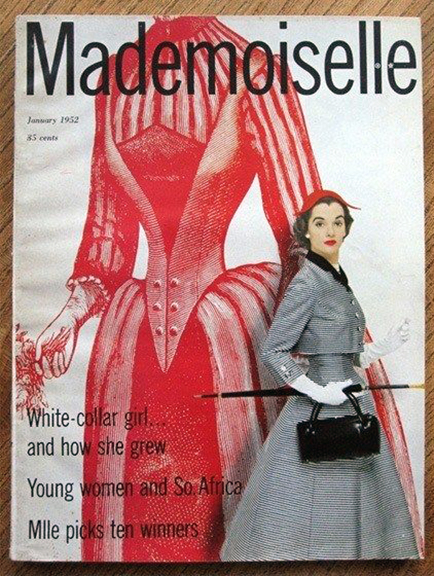
As Cipe Pineles was a hard worker, her skills advanced greatly in her time at Pratt Institute. After 3 years of higher education, she had graduated and began her job search. However, because of the times, she had struggled to find work simply because she was a woman MacDonald stated in their article in Eye Magazine that “Employers were reluctant to put her in the artists’ ‘bullpen’, where she might inhibit the crude jokes of the bulls.” Struggling to combat the sexism of her time, Pineles had found a group of other european immigrant designers like her where she once again began to flourish. This group was called Contempora Ltd, where Pineles had taken up a position in design advertisements, and also created pattern updates for the Contempora storefront. Contempora tackled everything from world fairs, ceramics, graphics, textiles, to coffee pots. This work had exposed Pineles to a wide variety of design work. Pineles spent two years with Contempora doing all kinds of grunt work to earn her keep. Toward the end of her two years at Contempora, she experimented more with textiles and fashion. This helped Contempora partner with clothing stores and expand her knowledge about the fashion industry.
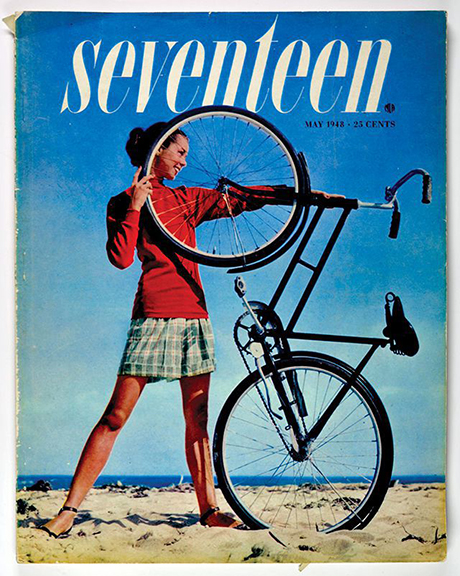
Contempora liked to throw parties and Gallas. It was at a party where Pineles had met Leslie Foster Nast, wife of Conde Nast. Nast was immediately impressed with Pineles work and made her a job offer to work under his Art Director, Dr. Mehemed Fehmy Agha, who oversaw the editing of Vogue, Vanity Fair, and House & Garden. Pineles had accepted his offer and began her work as Agha’s assistant. Working under Agha, Pineles had learned how to work as an editorial designer. Agha had been hard on Pineles as he was never satisfied, always sending her back to work to go deeper and deeper and outdo herself. He was always encouraging his staff to visit galleries and take in real inspiration, really pushing them to put out their best work. During the early 1930s, Condé Nast publications were innovative and used European Modernism in magazine design. Their Typography was simple and typefaces such as Futura became common. Headlines and text could be anywhere on the page. Photography took precedence over fashion illustration and was reproduced large on the page, bleeding off to create “landscapes” or transgressing across the gutter. Space expanded as purely decorative elements disappeared and margins were opened. During her time under Agha, Pineles had learned all the ins and outs of the art director position and eventually had risen to the spot that she was being prepared for. Pineles was named art director of Glamour in 1942. Pineles had used her best judgement in her role a art director to some of the best talents at the time like photographers Andre Kertesz, Herbert Matter, Cornell Capa, Toni Frissell, and Trude Fleischmann; designer Ladislav Sutnar; and artists S.E. and Richard Lindner and Lucille Corcos.
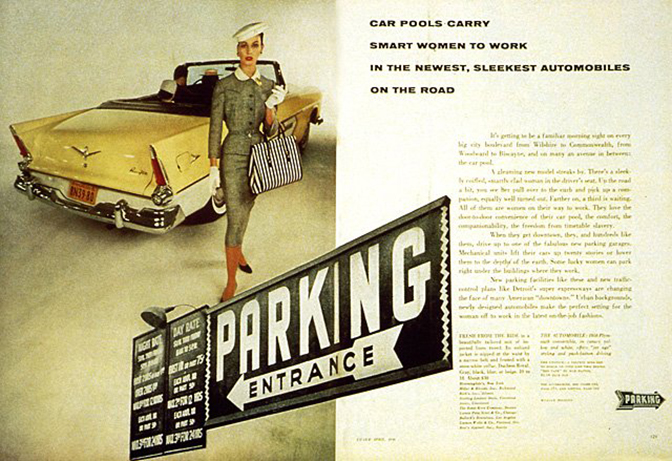
Shortly after World War II, Pineles had worked as an art director for the new Seventeen magazine. The magazine’s audience consisted of teenage girls and the founder set the tone for them to be addressed as serious and intelligent young adults instead of only marriage-minded girls that other publishers set. Pineles had continued this trend to educate teenage girls and used the best contemporary artists in America. The visual education paired well with the best artists’ works.
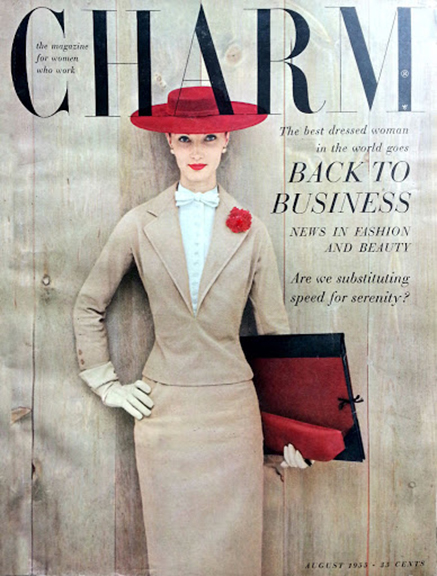
This use of the fine arts to illustrate mass market publications can be credited to Cipe Pineles. This brought the fine arts to the attention of young mainstream audiences and introduced commercial art to the fine arts world. Pineles commissioned such artists as Ben Shahn and his wife, Berarda Bryson, Richard Lindner, Jacob Lawrence, Reginald Marsh, John Sloan, and Dong Kingman. As Pineles had a background in art, she left artists to their own devices to illustrate whatever they liked from the articles.
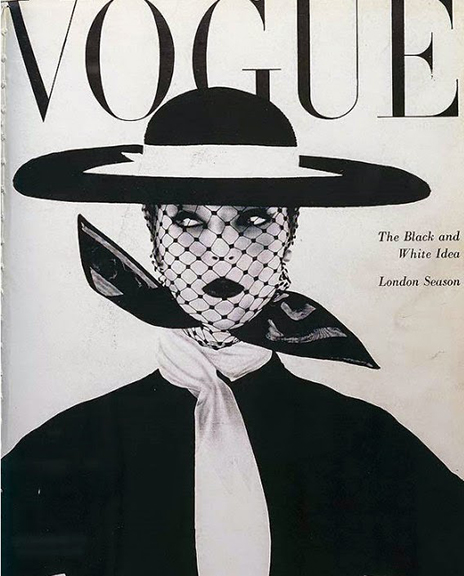
photograph by Irving Penn
For additional information on the magazine, publications, and background on Cipe Pineles, please visit:
AIGA – https://www.aiga.org/medalist-cipepineles
Rochester Institute of Technology – https://www.rit.edu/carycollection/cipe-pineles
Cipe Pineles – https://www.cipepineles.com/
Smith Design – https://smithdesign.com/blog/women-in-design-cipe-pineles/
Creative Pro – https://creativepro.com/the-illustrious-illustrative-world-of-cipe-pineles/
Eye Magazine – http://www.eyemagazine.com/feature/article/the-tenth-pioneer
Writing by Nick Munafo. Nick is a junior graphic design major who holds a deep fascination with mid 20th century graphic and publication printed ephemera. In addition to his interest in design, Munafo is fond of the beautiful game (football/soccer), and a longtime fan of the north London club Arsenal (better known as ‘The Gunners’).


